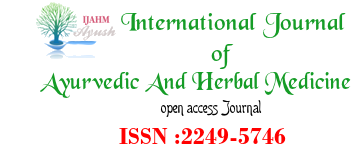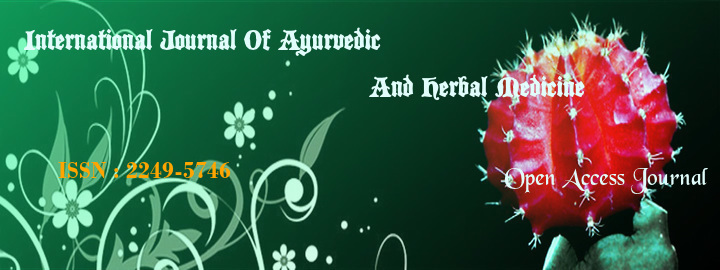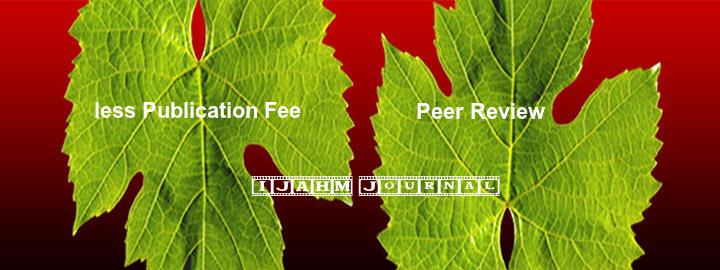


Rathore, S. and Shashni, S.*
DOI : http://dx.doi.org/10.31142/ijahm/v10i6.08
B. Pant National Institute of Himalayan Environment Himachal Regional Center, Mohal-Kullu 175 126 Himachal Pradesh
ABSTRACT
People living in the rural areas of Himalaya have a unique knowledge system to live in harmony with nature since time immemorial. They had a very specific knowledge system to manage or maintain different things in their day to day life in which oral hygiene is the one. Traditionally, various plant species were used as daatun (tooth brushing stick) to maintain oral hygiene and some are still being used by the native communities in different parts of the country. The current study was carried out in the Kullu district of Himachal Pradesh to document the plant species used as daatun. A total of 13 plant species belonging to 13 genera and 9 families with a dominance of 9 tree species and 4 shrub species have been documented. Rosaceae is the dominant family with 3 species such as Malus pumila, Prunus domestica, and Prunus cerasoides. Documentation of these plant species used by the natives to maintain oral hygiene will also be helpful for pharmaceutical agencies to develop dental care products in the future. It will also be helpful for the economic development of hill communities of the region.
Keywords: Traditional Knowledge, Hygiene, Plant, Kullu, Himachal Pradesh.
References
- Bansal M, and Veeresha KL. Oral health status and treatment needs among factory employees in Baddi- Barotiwala-Nalagarh hub, Himachal Pradesh, India. Industrial Indian Journal of Oral Sciences 2013; 4 (3): 105-109.
- Bhambal A. Kothari S., Saxena S. and Jain M. A comparative effect of neemstick and toothbrush on plaque removal or gingival health: a clinical trial. Journal of Advanced Oral Research 2011; 2 (3): 51-56.
- Chowdhery HJ and Wadhwa BM. Flora of Himachal Pradesh, Analysis Vols. 1-3. Botanical Survey of India, Calcutta, 1984.
- Deka K and Nath N. Application of Local Health Traditional Knowledge in Oral Health and Hygiene among the Ethnic tribes of Nalbari and Barpeta Districts of Western Assam (North East India). International Journal of Pure & Applied Bioscience 2014; 2 (5):107-114.
- Dhaliwal DS and Sharma S. Floristic analysis and diversity of Kullu district, Himachal Pradesh. In: Sivadasan, M. & Matthe, P. (eds.) Biodiversity, Taxonomy and Conservation of Flowering Plants. Mentor Books, Calicut. 1999; 49-55.
- Hazarika P, Hazarika P and Dutta D. Traditional knowledge for using plant resources as tooth brushing stick (datun) by the indigenous communities of Assam, India. International Journal of Herbal Medicine 2018; 6(6):22-34.
- Kshirsagar TJ and Jareen AJ. The Miracle Twig-Miswak. International Journal of Applied Dental Sciences 2017; 3 (2):66-70.
- Kumar N and Choyal R. Ethno-medicinal uses of some plants of lower foot hills of Himachal Pradesh for the treatment of oral health problems and other mouth disorders. International Journal of Advanced Research 2013; 1 (5):1-7.
- Kumar P. Ethnomedicinal plants used for oral health care in India. International Journal of Herbal Medicine 2014; 2 (1): 81-87.
- Kumar R. Plants used for oral hygiene in district Kangra of Himachal Pradesh (India). International Journal of Research and Analytical Reviews 2018; 5 (3): 23-28.
- Malik AS, Shaukat MS, Qureshi AA and Abdur R. Comparative effectiveness of chewing stick and toothbrush: A randomized clinical trial. North American Journal of Medical Sciences 2014; 6 (7):333-337.
- Singh H, Krishna G and Baske PK. Ethnomedicinal plants used for dental care in Sundergarh, Mayrubhanj, Angul and Balangir districts of Odisha, India. International Journal of Natural Products and Resources 2013; 4(4): 419-424.
- The Plant List Version 1.1 [Internet]. 2020. Available from: http://www.theplantlist.org/
- Johnsing AJT, Rawat GS, Satyakumar PV and Kaur J. Prioritization of area for biodiversity conservation of alpine zone in Trans and Greater Himalaya in India. Biodiversity Conservation Prioritization Project in India, WWF, New Delhi, 1998.
- Valdiya KS. Stratigraphic scheme of the sedimentary units of the Kumaun lesser Himalaya. Stratigraphy and correlations of the lesser Himalayan formations, 1980; 72: 48.
- Samant SS. Diversity, distribution and conservation of fodder resource of west Himalaya, India. Proceedings of the Third Temperate Pasture and Fodder Network (TAPAFON), Pokhra, Nepal, 1998; 9: 9-13.
- Srivastava S. and Mishra N. Medicinal herbs used for gynecological problems: An Overview. Research Journal of Pharmacognosy and Phytochemistry 2009; 1(3):177-181.
- Khan SM, Page SE, Ahmad H and Harper DM. Sustainable utilization and conservation of plant biodiversity in montane ecosystems: The Western Himalayas as a case study. Annals of Botany 2013; 112(3): 479-501.
- Samant SS, Pant S, Singh M, Lal M, Singh A, Sharma A and Bhandari S. Medicinal plants in Himachal Pradesh, North Western Himalaya, India. The International Journal of Biodiversity Science and Management 2007; 3(4): 234-251.
- Gupta R, Vairale MG, Deshmukh R, Chaudhary PR and Wate SR. Ethnomedicinal uses of some plants used by Gond tribe of Bhandara district, Maharashtra. Indian Journal of Traditional Knowledge 2010; 9(4): 713-717.
- Kumar S, Chand G and Sankhyan P. Herbal folk remedies for curing various ailments in lug valley of district Kullu, Himachal Pradesh. (N. W. Himalaya). International Journal of Ayurvedic and Herbal Medicine 2013; 5: 1308-1314.
index






















